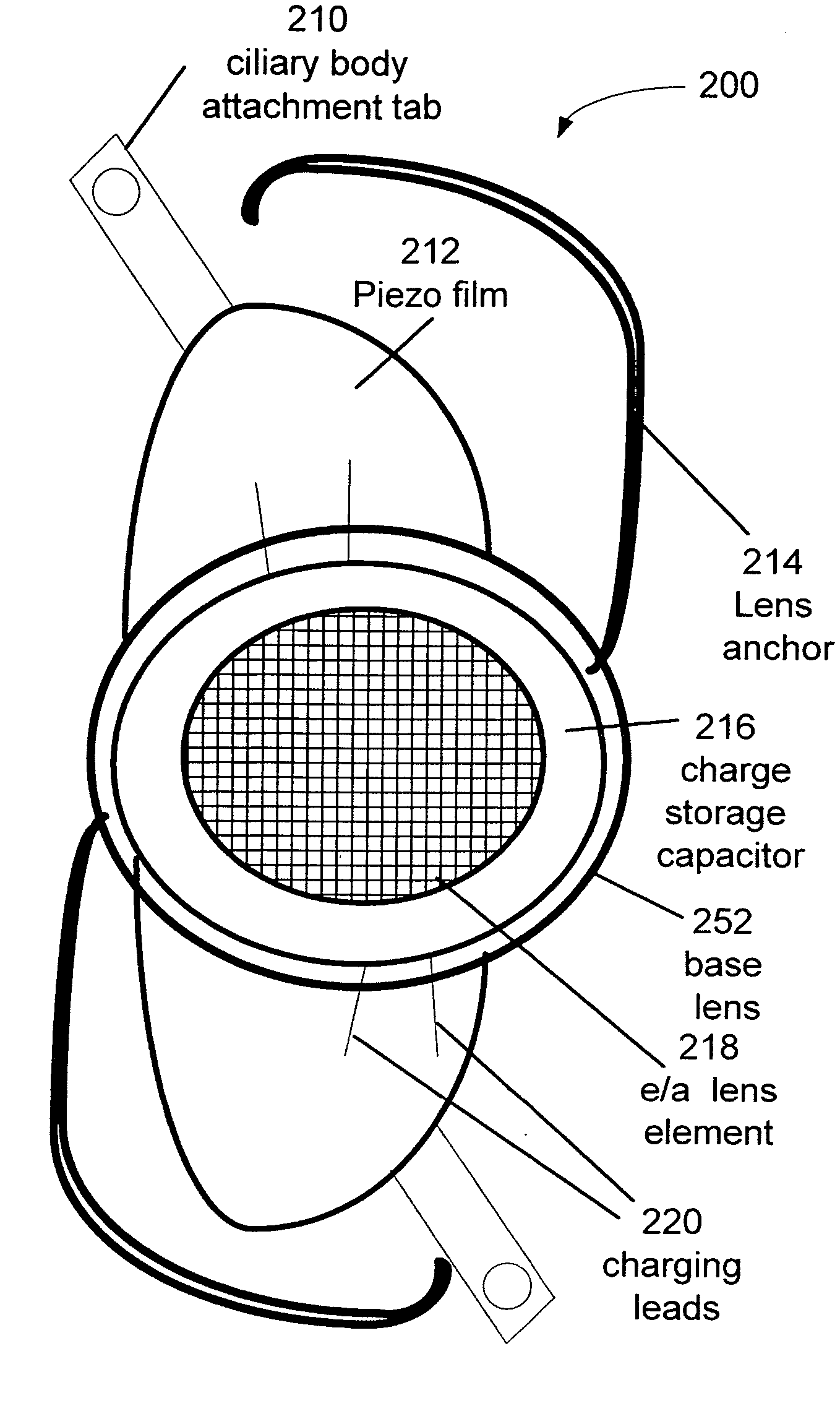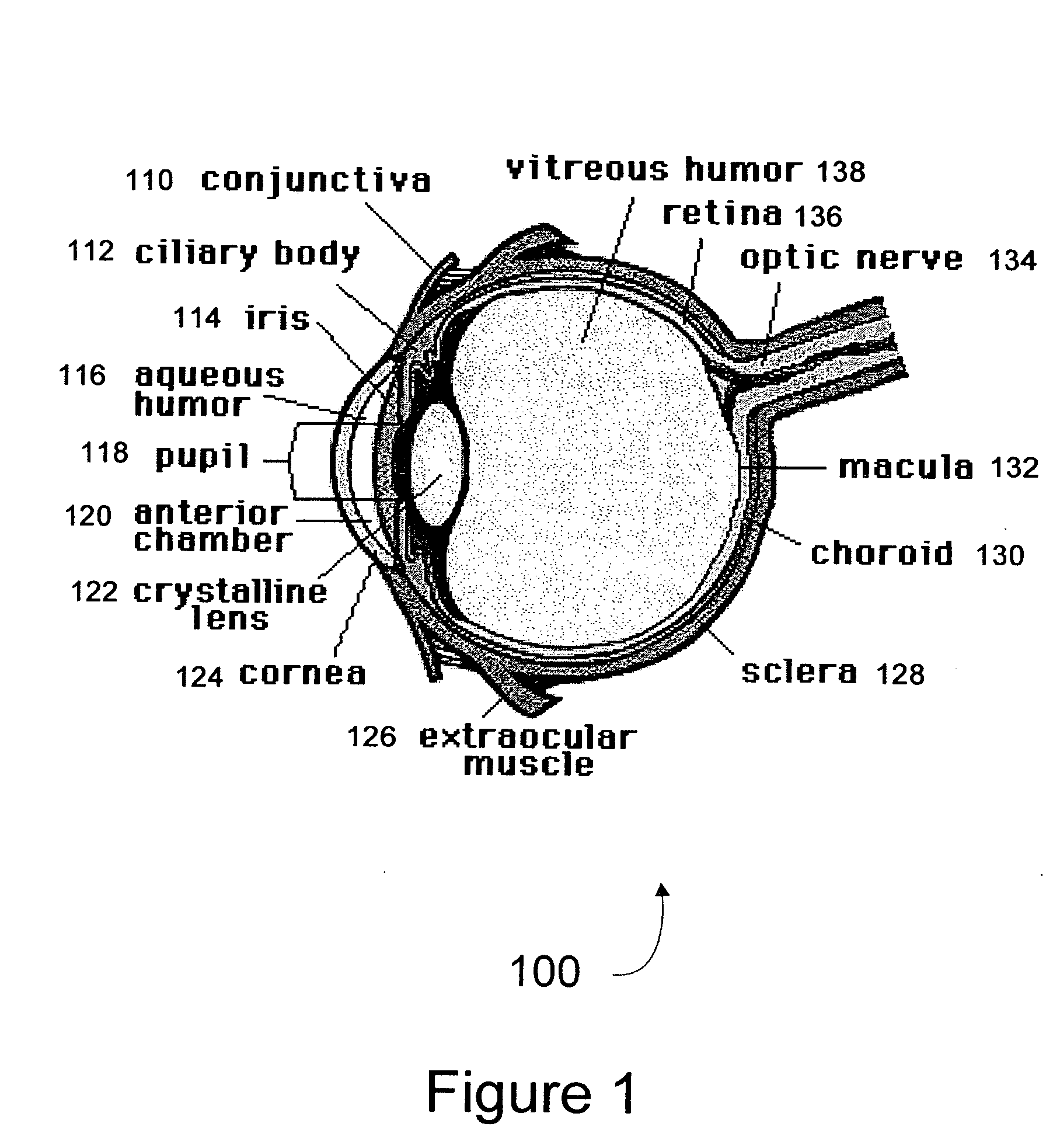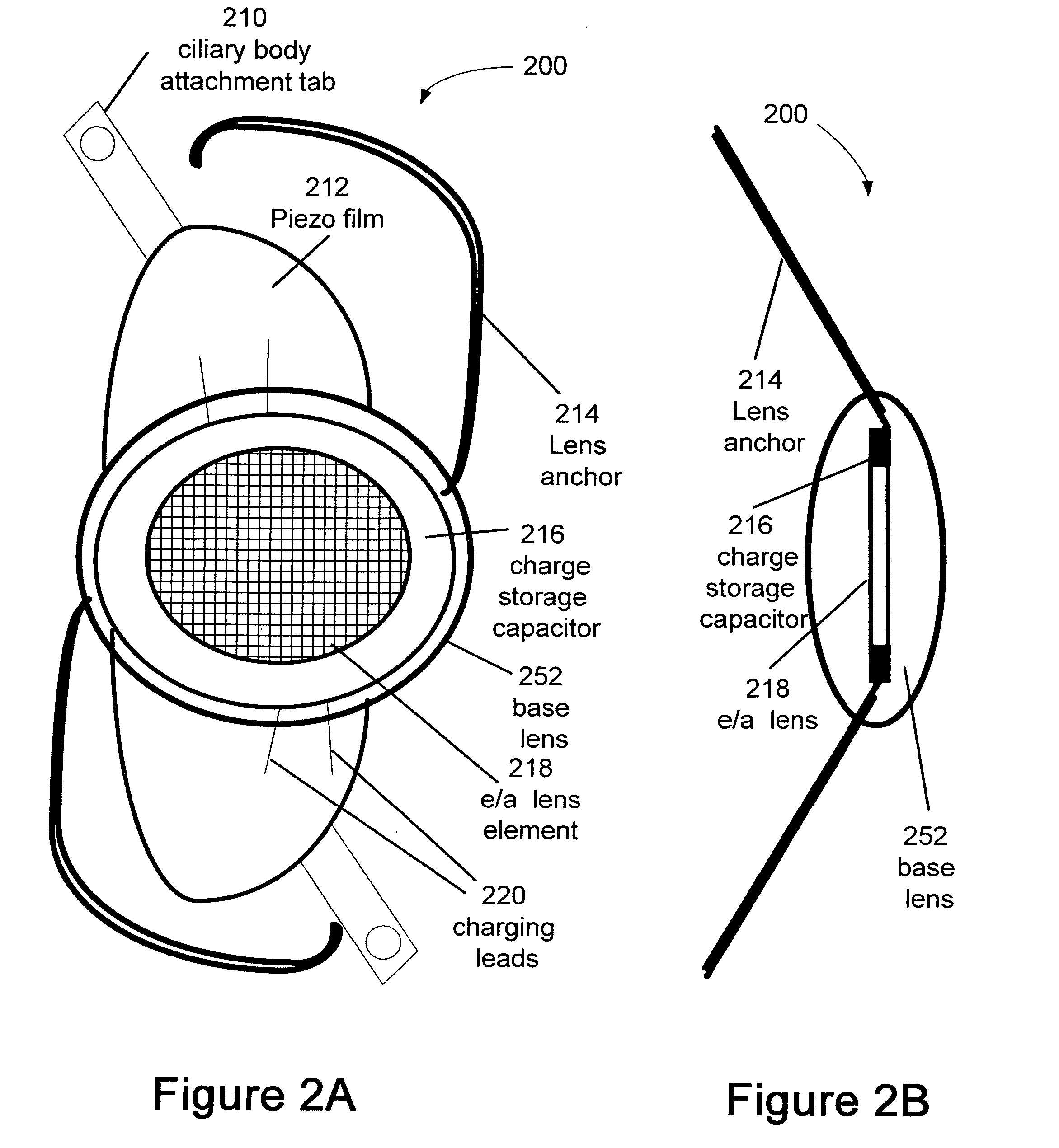Electro-active intraocular lenses
a technology of intraocular lenses and electrodes, applied in the field of intraocular lenses, can solve the problems of changing the optical characteristics of the eye, losing transparency, and losing flexibility of critical crystalline lenses
- Summary
- Abstract
- Description
- Claims
- Application Information
AI Technical Summary
Problems solved by technology
Method used
Image
Examples
Embodiment Construction
[0029] Hereinafter, various embodiments of the invention will be described. As used herein, any term in the singular may be interpreted in the plural, and alternately, any term in the plural may be interpreted to be in the singular.
[0030] Electro-active materials comprise optical properties that may be varied by electrical control. For example, transmission of light may be controlled to produce tinting or a sunglass effect. Further, the index of refraction may be electrically controlled to produce focusing and or prismatic effects. One class of electro-active material is liquid crystals. Liquid crystals comprise a state of aggregation that is intermediate between the crystalline solid and the amorphous liquid. The properties of liquid crystals may be controlled electrically, thermally, or chemically. Many liquid crystals are composed of rod-like molecules, and classified broadly as: nematic, cholesteric, and smectic.
[0031] There are several characteristics of electro-active materi...
PUM
 Login to View More
Login to View More Abstract
Description
Claims
Application Information
 Login to View More
Login to View More - R&D
- Intellectual Property
- Life Sciences
- Materials
- Tech Scout
- Unparalleled Data Quality
- Higher Quality Content
- 60% Fewer Hallucinations
Browse by: Latest US Patents, China's latest patents, Technical Efficacy Thesaurus, Application Domain, Technology Topic, Popular Technical Reports.
© 2025 PatSnap. All rights reserved.Legal|Privacy policy|Modern Slavery Act Transparency Statement|Sitemap|About US| Contact US: help@patsnap.com



